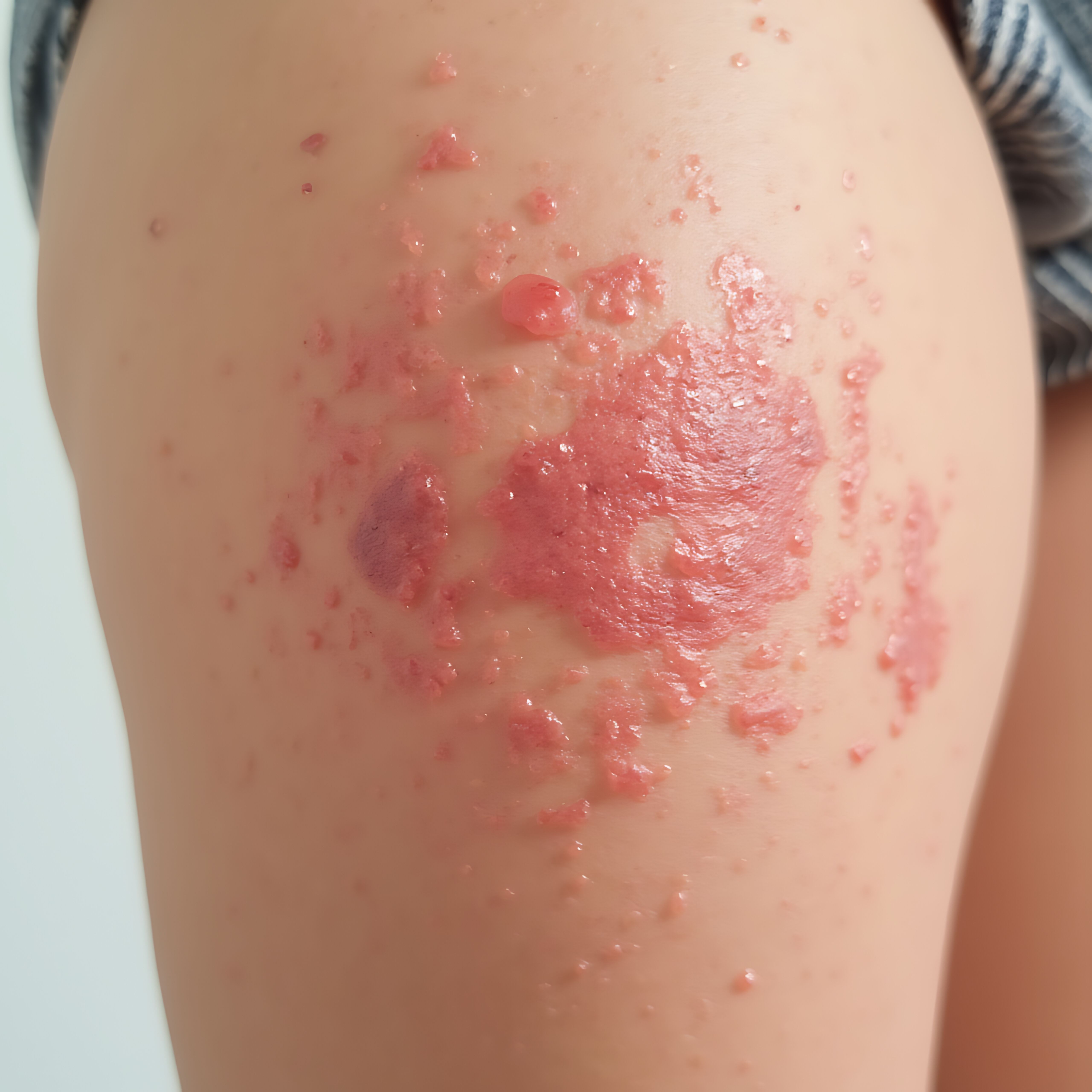- Center on Health Equity & Access
- Clinical
- Health Care Cost
- Health Care Delivery
- Insurance
- Policy
- Technology
- Value-Based Care
Personalizing Urticaria Treatment Through the Evolving Role of Biomarkers and Biopsies
Current guidelines suggest limiting diagnostic testing for chronic spontaneous urticaria when no clear cause is suspected, though biomarkers and biopsies are emerging as tools to predict treatment response and personalize care.
Current guidelines suggest limiting diagnostic testing for chronic spontaneous urticaria (CSU) when no clear cause is suspected, though biomarkers and biopsies are emerging as tools to predict treatment response and personalize care. | Image Credit: teambdcx - stock.adobe.com

Patients with chronic spontaneous urticaria (CSU) need a smarter approach for diagnosis and treatment, advocating for limited diagnostic testing unless a clear underlying cause is suspected, and emphasizing the growing role of biomarkers in predicting disease severity, prognosis, and treatment response, according to a review published in World Allergy Organization Journal.1
No reference standard exists for diagnosing chronic urticaria because the condition often mimics other pruritic diseases, which ultimately hinders epidemiological understanding.2 Oftentimes, patients seek treatment in emergency departments, from dermatologists, or in toxicology settings, and can detect other underlying pathologies like infections, drug reactions, or anaphylaxis.
Urticaria management currently recommends a diagnostic work-up that focuses on a comprehensive history and physical examination.1 However, extensive routine testing does not always lead to improved outcomes of care, and it is not cost-effective.
CSU has multiple phenotypes and endotypes characterized by different mechanisms of action, clinical features, and differential responses to treatment. Researchers believe mast cells are the critical effector cell type involved in CSU and chronic inducible urticarias (CIndU). Unfortunately, repurposing biologics approved for asthma and other allergic and nonallergic conditions has disappointed when studied for CSU or CIndU, except for dupilumab, which received an expanded FDA approval to include patients 12 years and older with CSU whose condition is not adequately managed by standard H1 antihistamine treatment.1,3
Biopsies comprising mixed cell infiltrates of eosinophils and neutrophils associate with autoimmune CSU and respond less to H1-antihistamines and omalizumab.1 For some patients with neutrophilic infiltrates on biopsy, autoimmune disorders may be present that respond more to medications like dapsone, hydroxychloroquine, or colchicine.
Angioedema and CIndU have been identified as risk factors for a more severe and prolonged course of CSU, respectively. Several studies have linked increased D-dimer to severe CSU, which decreases during remission. Notably, one-half of patients with severe CSU refractory to high-dose second-generation antihistamines have elevated D-dimer plasma levels, which parallel disease activity and treatment response. Researchers can safely say that CSU treatment does not have a “one size fits all” approach, and biomarkers will serve as useful clinical tools for directing clinical treatment decisions, but further investigation is required to confirm.
The presence of angioedema, a longer duration of CSU, and concomitant CIndU are all associated with more severe urticaria. The evidence concerning responders and nonresponders to omalizumab and other therapies, including second-generation antihistamines and cyclosporine, has advanced in recent years, and these data have fostered an understanding that, rather than directing a search for a cause for urticaria, diagnostic testing has utility for predicting response to treatment and long-term prognosis. Another notable recommendation in the latest guideline is the use of patient-reported outcome measures to assess severity and control.
Elevated C-reactive protein indicates increased urticaria activity, worse quality of life, and is higher in patients unresponsive to H1-antihistamines. Positive basophil activation tests point to more severe disease and a slower or poorer response to omalizumab. High IgE levels often predict a good response to omalizumab, while low IgE and a positive autologous serum skin test suggest cyclosporin may be effective.
Elevated IL-17, IL-31, and IL-33 identify patients with potentially more severe itching and increased disease activity. While recent guidelines discuss these biomarkers for guiding treatment, they don't yet incorporate these diagnostic tests into the standard treatment algorithm.
Traditionally used for research, skin biopsies for CSU may be useful in clinical practice for patients with unusual symptoms like systemic issues, long-lasting lesions, burning sensations, or postlesion hyperpigmentation.
For those unresponsive to high-dose antihistamines, a skin biopsy can rule out urticarial vasculitis or identify cellular infiltrates suggesting harder-to-treat chronic autoimmune urticaria. Some research indicates IL-17 plays a role in certain CSU subtypes and could serve as a biomarker for predicting treatment response. Future studies should investigate skin biopsy utility in CSU to classify histological subtypes and personalize treatment.
Several biomarkers help assess CSU severity, prognosis, and response to standard treatments like H1-antihistamines and omalizumab. However, the Autologous Serum Skin Test isn't specific to autoimmune CSU, as it can be positive in other autoimmune conditions and even healthy individuals.
If CSU involves T-cells, T-cell-related cytokines might act as biomarkers to improve diagnosis and treatment. Further evaluation of these T-cell-related biomarkers is needed.
“It should be noted that for more severe cases of CSU, it may be necessary to use a combination of different therapies to establish control in these patients,” study authors concluded.
References
1. Bernstein JA, Ansotegui I, Asero R, et al. Diagnostic testing for chronic spontaneous urticaria with or without angioedema: the do's, don't and maybe's. World Allergy Organ J. 2025;18(7):101068. doi:10.1016/j.waojou.2025.101068
2. Santoro C. Urticaria diagnosis challenged by overlapping pruritic skin conditions. The American Journal of Managed Care®. April 23, 2025. Accessed July 8, 2025. https://www.ajmc.com/view/urticaria-diagnosis-challenged-by-overlapping-pruritic-skin-conditions
3. Santoro C. FDA greenlights dupilumab for chronic spontaneous urticaria, marking first approval in a decade. The American Journal of Managed Care. April 18, 2025. Accessed July 8, 2025. https://www.ajmc.com/view/fda-greenlights-dupilumab-for-chronic-spontaneous-urticaria-marking-first-approval-in-a-decade
